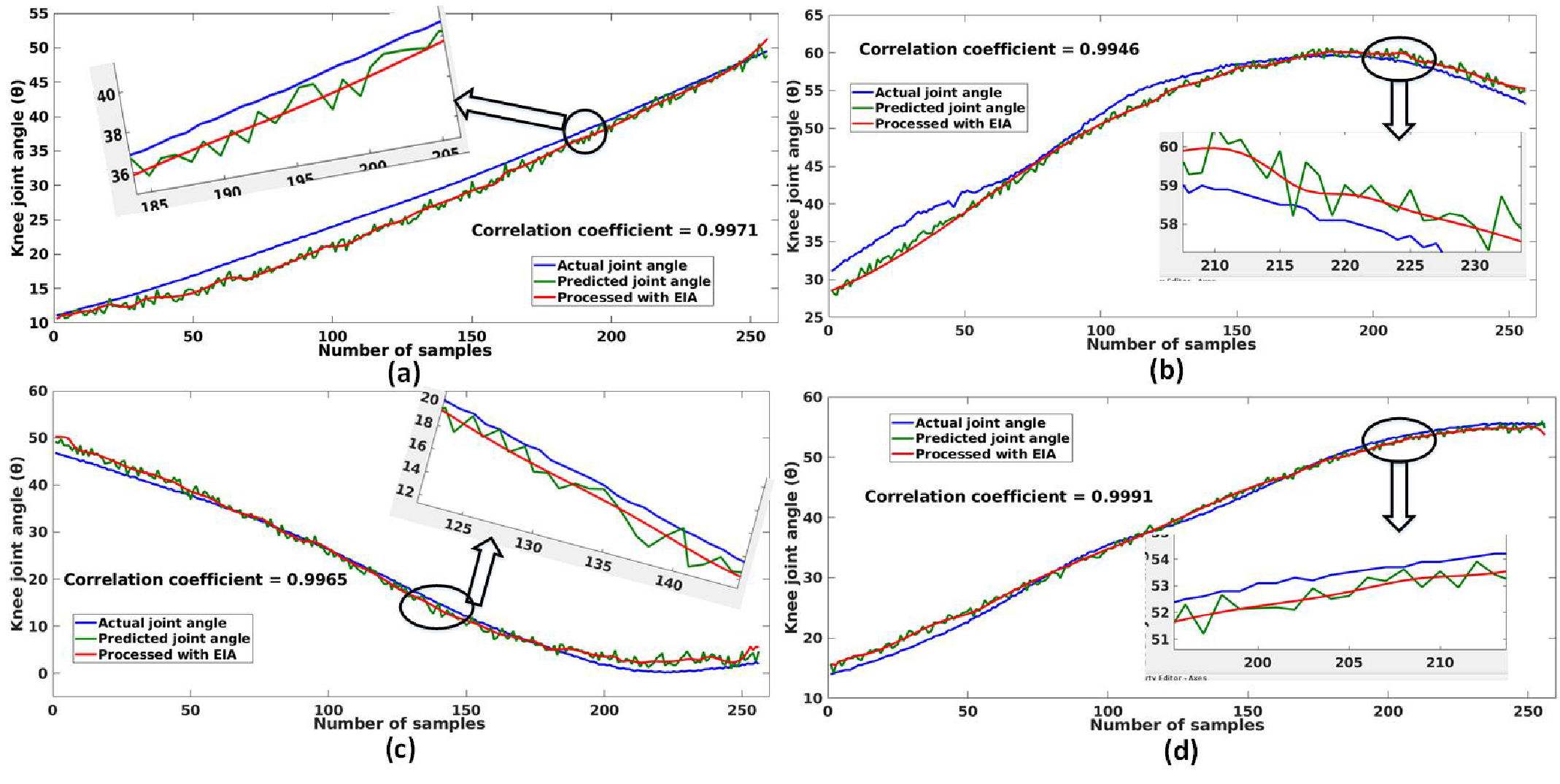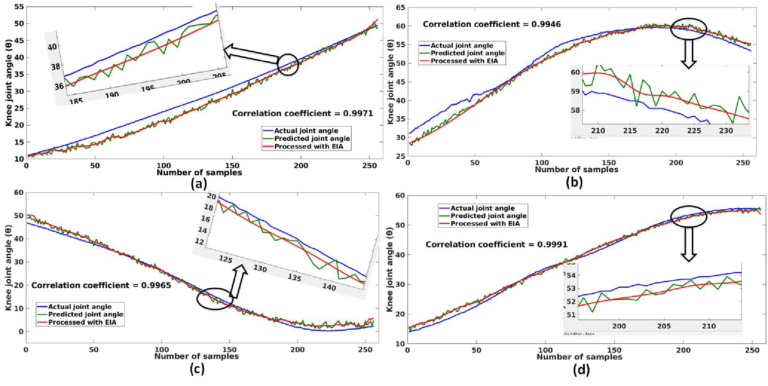
The clinical assessment technology such as remote monitoring of rehabilitation progress for lower limb related ailments rely on the automatic evaluation of movement performed along with an estimation of joint angle information. In this paper, we introduce a transfer-learning based Long-term Recurrent Convolution Network (LRCN) named as ‘MyoNet’ for the classification of lower limb movements, along with the prediction of the corresponding knee joint angle. The model consists of three blocks- (i) feature extractor block, (ii) joint angle prediction block, and (iii) movement classification block. Initially, the model is end-to-end trained for knee joint angle prediction followed by transferring the knowledge of a trained model to the movement classification through transfer-learning approach making a memory and computationally efficient design. The proposed MyoNet was evaluated on publicly available University of California (UC) Irvine machine learning repository dataset of the lower limb for 11 healthy subjects and 11 subjects with knee pathology for three movements type-walking, standing with knee flexion movements and sitting with knee extension movements. The average mean absolute error (MAE) resulted in the prediction of joint angle for healthy subjects and subjects with knee pathology are 8.1 % and 9.2 % respectively. Subsequently, an average classification accuracy of 98.1 % and 92.4 % were achieved for healthy subjects and subjects with knee pathology, respectively. Interestingly, the significance of this study in itself is promising with substantial improvement in the performance compared to state-of-the-art methodologies. The clinical significance of such surface electromyography signals (sEMG) based movement recognition and prediction of corresponding joint angle system could be beneficial for remote monitoring of rehabilitation progress by the physiotherapist using wearables.

